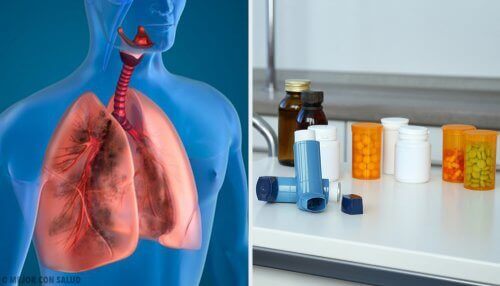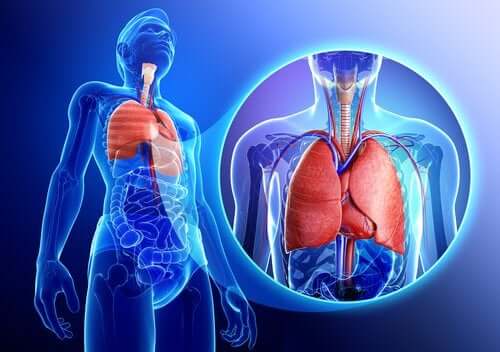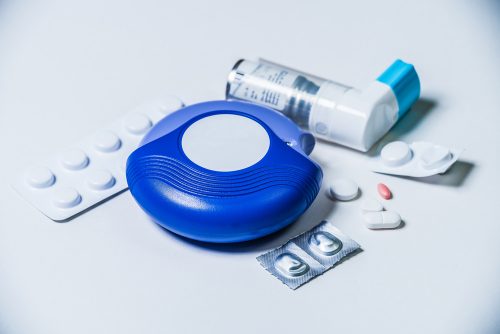What's Aerosol Therapy?

Aerosol therapy is a treatment system that allows administering substances or drugs in aerosol form by inhalation. Doctors use nebulizers are devices to administer these treatments. Overall, these devices can convert a liquid into aerosol particles. Thus, they create a fine mist that the patient can breathe in.
With aerosol therapy, a substance or drug can be deposited in the respiratory tract and exert its therapeutic action.
Aerosol therapy indications

Overall, the most common indication is the administration of bronchodilator drugs in patients with asthma and COPD. However, it’s also used in the treatment of other diseases. These include cystic fibrosis, HIV, and bronchiectasis.
Drugs that can be administered
With aerosol therapy, medical professionals can administer:
- Bronchodilator or corticosteroid drugs.
- Mucolytics that help clear mucus.
- Substances such as saline which make the secretions more liquid.
- Antibiotics to directly treat bronchial infections.
Also, discover: Chronic Obstructive Pulmonary Ddisease (COPD)
The advantages of aerosol therapy
Overall, the main advantage is that aerosol therapy allows administering substances or drugs so that they come into direct contact with the affected areas of the airways. Thus, a rapid effect is achieved with lower doses.
Moreover, it typically has fewer side effects than systemic administration. After all, it directly deposits the substance or drug at the bronchial level. Factors that determine the deposit of a nebulized substance in the airways is particle size. However, depending on the type of nebulizer, there can be considerable differences in particle size and velocity and dispersion of the mist.
Here are the factors that depend on the patient:
- Age
- The respiratory pattern of inhalation
- Lung condition
Risks and complications
Overall, some of the complications that may arise include:
- Bronchospasm. The bronchi become inflamed and constrict. This causes coughing and difficulty breathing.
- Infections due to contamination.
- Palpitations or increased blood pressure.
- Retention of carbon dioxide, which is usually removed with exhalation.
Also, you should read: What to Do if You Suffer from Chronic Asthma or Allergies
Administration of aerosol therapy

Patients must use nebulizers correctly. Otherwise, they won’t be effective. Also, it’s very important that the type of nebulizer the patient uses is suitable for the necessary substance or drug to treat their condition.
The drugs can be administered with a face mask in patients who are suffering from extreme fatigue or shortness of breath. Also, they can do this when there’s an inability to use a conventional inhaler. Often, this is the case of elderly or acutely ill patients.
The patient or medical professional must prepare the medication properly. Also, you must have the necessary materials. Plus, should thoroughly wash your hands. For proper application, follow the device instructions and use the exact drug dosage.
However, if your treatment includes various drugs or substances, you have to take one after another in the following order:
- Bronchodilators and/or corticosteroids.
- Substances to fluidify secretions.
- Respiratory physiotherapy. To mobilize and expel secretions.
- Antibiotics to treat bronchial infections.
However, make sure to consult your doctor with any questions about this.
It’s advisable to do aerosol therapy while sitting down. Do this your back straight and head tilted back. This way, you prevent the resulting mist from affecting unwanted areas. Finally, you have to clean and disinfect the device and materials after each use.
Types of nebulizers
Overall, there are three basic types of nebulizers.

- Ultrasonic wave. The mist is produced by vibrating a piezoelectric crystal. However, they’re only suitable for nebulizing water and saline under different concentrations.
- Jet. These consist of a misting chamber that generates an aerosol with a gas flow. Overall, they’re suitable for nebulizing bronchodilators, anti-inflammatory drugs, saline under different concentrations, mucolytics, and antibiotics.
- Vibrating mesh nebulizers. The aerosol is generated by passing the liquid to be nebulized through the holes of a mesh. Overall, it’s perfect for nebulizing antibiotics. This is because they provide a larger lung deposit and less drug loss.
Conclusion
Overall, for effective treatment with aerosol therapy, you should follow your doctor’s instructions.
If you need multiple drugs, you must take them one after another in careful order. Also, you must be very careful and properly clean and disinfect the nebulizer. Likewise, it’s equally important to perform proper oral hygiene. This helps remove any traces of the medication.
All cited sources were thoroughly reviewed by our team to ensure their quality, reliability, currency, and validity. The bibliography of this article was considered reliable and of academic or scientific accuracy.
-
Hess, D., Myers, T., & Rau, J. (2013). Una Guia De Dispositivos Para Aerosolterapia. American Association for Respiratory Care.
-
Rodríguez, G., Fuentes, M., & Perea, P. (2013). Administración Medicamentos Por Nebulización. Junta de Andalucía.
-
Moreno, M. Y. V. (2015). GUIA DE AEROSOLTERAPIA. Respira.
This text is provided for informational purposes only and does not replace consultation with a professional. If in doubt, consult your specialist.








